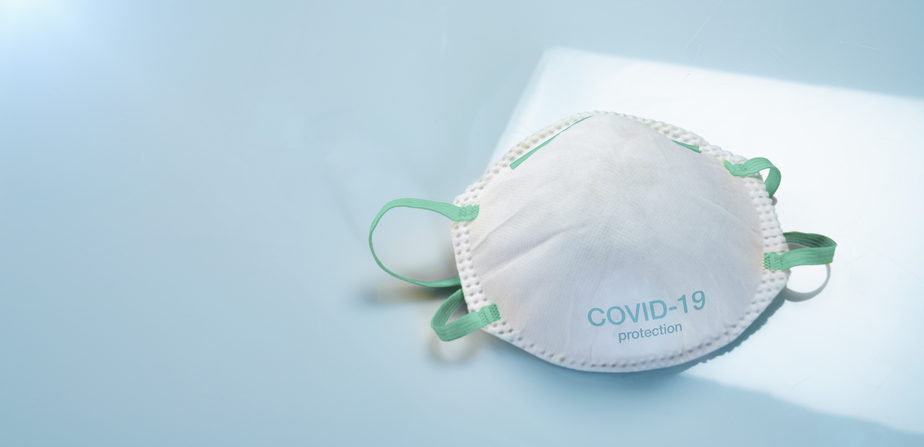The COVID-19 pandemic which began in early 2020 has caused over 500,000 deaths in the United States by March 2021, along with over 28 million cases of infection. For most individuals who have contracted COVID-19, the symptoms they have experienced have been relatively mild, but a huge number of COVID patients have required hospitalization, overwhelming the U.S. healthcare system. And there is now an emerging issue that is drawing the attention of infectious disease specialists and epidemiologists – the persistence of “long-haul” COVID symptoms after recovery from the initial infection.
Martina Sherman, one of our shareholders, was recently featured on Chicago Tonight and discussed the implications of the “Long-COVID” reality that thousands of people are experiencing. Mrs. Sherman appeared with Dr. Charles Davidson from Northwestern Medicine Comprehensive COVID-19 Center to answer questions about Long-Covid symptoms and their impact on the ability to work. The overall concern shared among disability rights advocates is that COVID-19 could be the largest disabling event since polio.
Table of Contents
Who Qualifies for Long-Term Disability Benefits Due to COVID-19?
Many of the COVID-19 patients who have been hospitalized have qualified for short-term disability benefits under employer-sponsored benefit programs; and the duration of impairment for many has resulted in a significant number of long-term disability claims as well. Qualifying for such benefits generally requires severe enough symptoms to preclude employment for a sufficient number of days known as the “elimination period.” An elimination period is the period of time between the onset of a disabling impairment and when benefits become payable. No benefits are due, however, if the impairment lasts for a shorter duration than the elimination period.
For short-term disability, elimination periods are typically only a few days. Thus, absences due to COVID-19 that last longer than the elimination period specified in the short-term disability insurance policy would result in a payable claim for such benefits. Elimination periods for long-term disability benefits are often longer, though. Some plans utilize a 180-day elimination period, while other have as long as a 365-day elimination period. Thus, no benefits are payable if the claimant regains the ability to return to work prior to the expiration of the elimination period.
How Do You Prove Disability Due to COVID-19?
It is also important to keep in mind that a diagnosis is typically not enough to qualify someone to receive disability benefits. Even if the diagnosis is for a very serious condition such as cancer or Parkinson’s disease, it would not automatically qualify someone for disability benefits. It is only when the condition affects the ability to work is it considered disabling.
Thus, if someone is infectious and has to stay out of work or be quarantined for a period of time due to the risk of transmission but is not symptomatic in a way that limits occupational performance, it is unlikely that such an individual would qualify for disability benefits unless such a scenario is specified in a disability insurance policy; and indeed, some policies do have such provisions.
Can I Get Disability Benefits Due If I Am Quarantined?
There have been a number of court rulings on this issue, but most have sided with the disability insurance companies even for people who may be legally barred from working while infectious (even if otherwise asymptomatic) such as physicians. The insurance companies view that scenario as a “legal disability” rather than a factual disability involving actual disablement due to an impairing illness.
Relatedly, someone who lacks restrictions or limitations, but is immunocompromised and could potentially face death from contracting even a mild case of COVID-19, may be able to collect disability benefits but only if their underlying illness is itself sufficiently severe enough to impair work. Many cases have found, though, that one should not have to risk serious illness or death in order to qualify for benefits. Thus, the presence of a documented condition and a quantifiable risk of facing death or other severe medical complications if infected at work may be enough to qualify for benefits. The type of work performed by the claimant would also be relevant. Someone who is regularly face-to-face with the general public at work would be more likely to qualify for disability payments than someone who usually works alone in a private office.
For further discussion of legal disability in the context of COVID-19, see my April 17, 2020 blog post, “COVID Brings Disability, Accidental Death Coverage Questions.”
Can I Qualify for Disability Benefits Due to “Long-Haul” COVID-19?
A growing concern with respect to COVID-19 and disability, though, is the issue of what has been called “long-haul COVID” or “long-COVID.” The WebMD website reported on February 19, 2021 that as many as one-third of patients who have been infected with COVID-19 are experiencing long-haul symptoms even if they initially experienced mild symptoms. Characteristic symptoms of long-haul COVID include fatigue, shortness of breath, headaches, other muscle aches and pains, continued loss of taste and/or smell, recurrent fevers, and cognitive complaints such as “brain fog.” Scientific American also published a lengthy piece in December 2020 recounting the experiences of many who have had symptoms which have persisted months after the initial infection improved.
If such symptoms persist and impair someone’s ability to work, long-haul COVID-19 may be grounds for qualifying for disability benefits. A claimant’s own description of their symptoms would not be enough to convince an insurance company to approve benefits, though. There needs to be a longitudinal record of medical treatment documenting the presence of impairing symptoms, which should also include objective clinical findings such as fever, swollen glands, and a manual exam results that corroborate pain throughout the body. Cognitive symptoms may also be reproducible on neuropsychological testing, which provides objective documentation of impairment. Medical testing can also be performed that corroborates a loss of taste (ageusia) or smell (anosmia).
What Evidence Can Prove Disability Due to Long-Haul COVID-19?
In addition, just as diaries of headache symptoms can be helpful in proving disability claims for conditions such as migraine headaches, claimants should keep a journal describing their symptoms in detail. Third-party observations may also be helpful. Thus, statements from spouses, other family members, or close friends who are able to recount their observations, can help establish a viable disability claim.
Individuals who are unable to work due to long-haul COVID and believe they would qualify for disability benefits on account of persistent symptoms should contact an experienced and knowledgeable disability benefit lawyer for further advice and assistance even before submitting a claim. Patients who have “recovered” from COVID-19, but who are still experiencing debilitating symptoms may face resistance from their disability insurer when they submit their claims for benefits, but with the assistance of an experienced long-term disability attorney, the challenge can be overcome. A successful claim for disability benefits allows claimants to achieve what really matters – the financial support that allows them to devote their full-time efforts to getting better.







